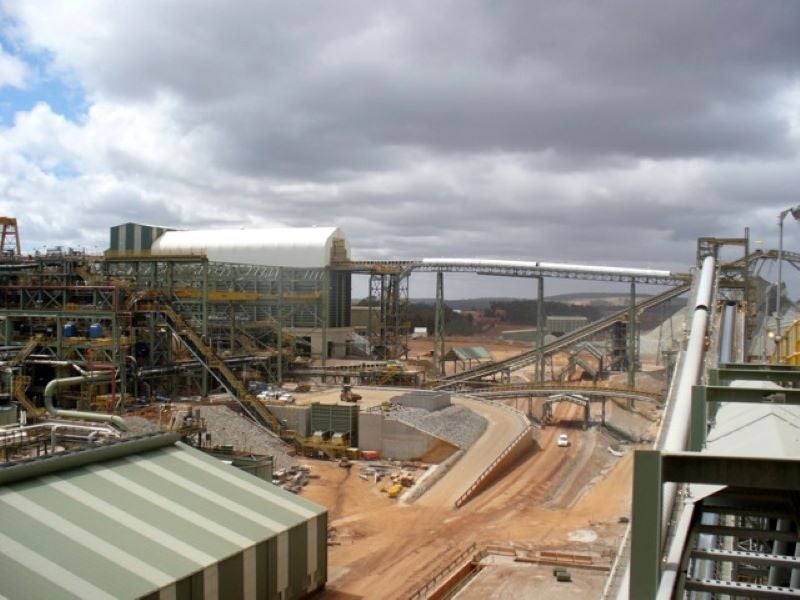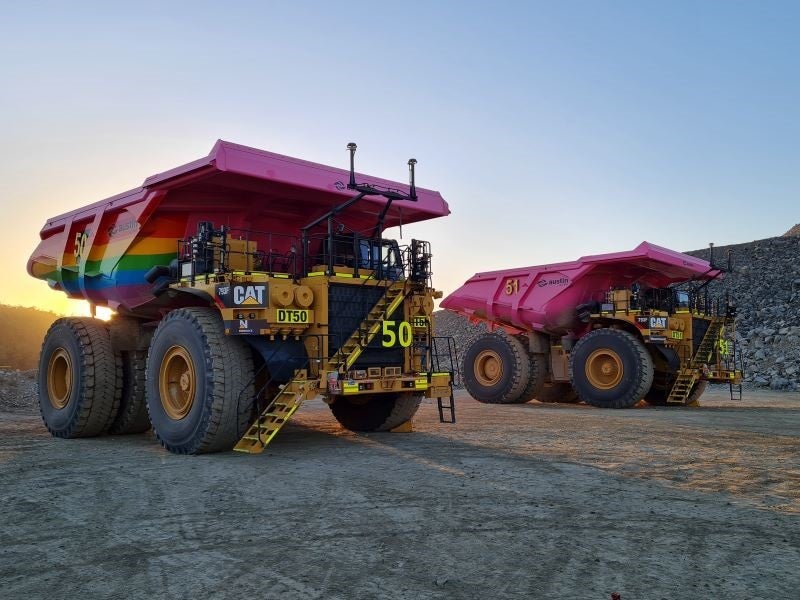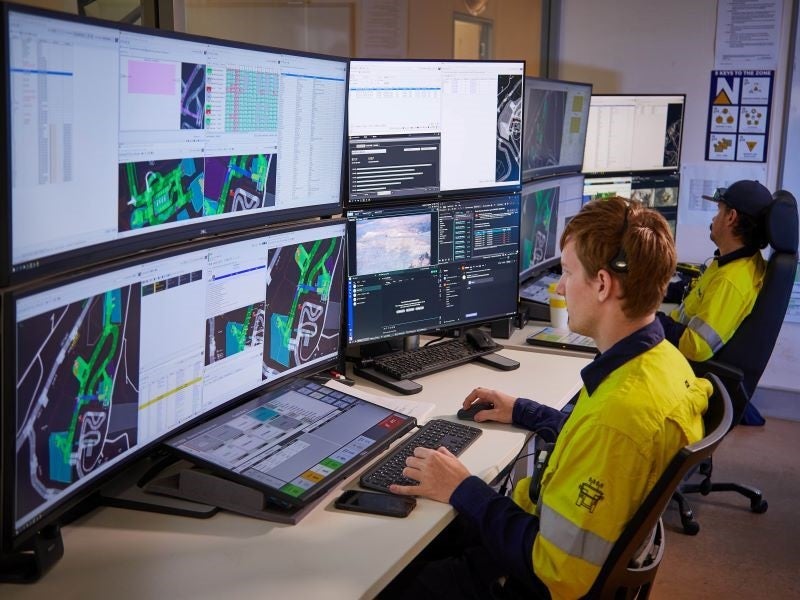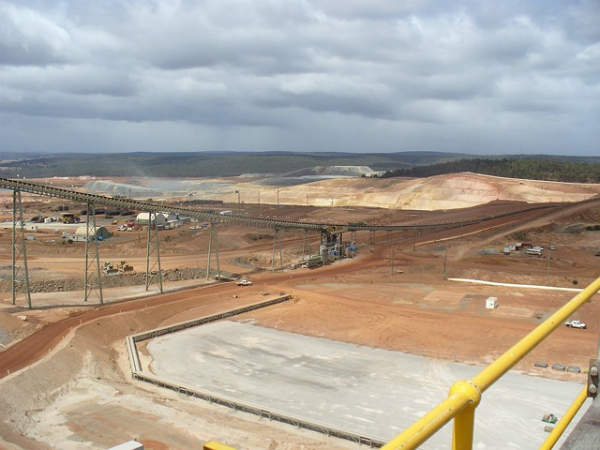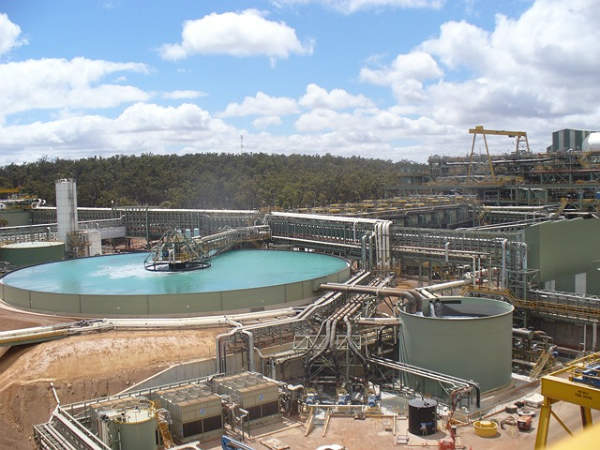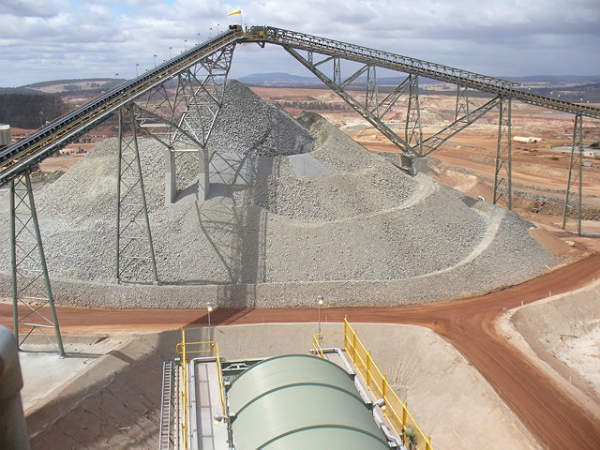The Boddington gold mine (BGM) is an operating open-pit mine located 130km from Perth, Western Australia (WA). It is one of the largest gold-producing mines in the country.
The $2.4bn project was initially a three-way joint venture between Newmont Mining (Newmont), AngloGold Ashanti (AngloGold), and Newcrest Mining.
In 2006, Newmont bought Newcrest’s 22.22% share, increasing its interest to 66.67%. AngloGold owned the remaining 33.33%. In June 2009, Newmont became the sole owner of the mine by acquiring the entire interest held by AngloGold in the project.
The original, mainly oxide open-pit mine was closed at the end of 2001. The project, including the construction of the treatment plant, was completed in July 2009. Production began in the third quarter of 2009. The first gold and copper concentrate was produced in August 2009.
Approximately 100,000t of ore was processed by mid-August. Gold production began on 30 September 2009. The mine achieved commercial production by November 2009 and was officially inaugurated in February 2010. It produced 696,000 ounces (oz) of gold and 32,205t of copper in 2021.
Location of Boddington gold mine
The Boddington gold mine is located 16km from the town of Boddington, WA. The project area encompasses 52,506 acres of mining tenure comprising multiple leases.
Boddington gold mine expansion details
Newmont decided to seek to expand the mine life by combining the north and south Wandoo open pits in May 2012. It also plans to expand the waste rock facility to two billion metric tonnes.
Newmont and AngloGold had focused their exploration activities on the poorly explored areas of the greenstone belt outside the already identified Boddington Expansion resource. The exploration strategy was to identify the resource potential of the remainder of the greenstone belt, with the focus on high-grade lode-type deposits.
The environmental authorities approved the life of mine extension project in August 2013. The mine life can be potentially extended to 2041. The expansion project includes the development of new RDA, expansion of waste rock dumps (WRDs), the development of new water storage dams, associated infrastructure and modification in the existing residue disposal area (RDA), the deepening and widening of pits, and additional stockpiles.
The construction of additional drainage and buttressing along Saddle Dams 3, 4, 5, 7, 8 and 9 of the F1 RDA for the project was approved in February 2019.
Geology and reserves of BGM
The BGM is located within the Saddleback greenstone belt (SGB), a fault-bounded sliver of Archaean volcanic and shallow level intrusive rocks, surrounded by granitic and gneissic rocks.
The proven and probable mineral reserves from the open pit and stockpiles at Boddington were estimated at 558.3 million tonnes (Mt), grading 0.65g/t of gold and 0.11% copper and containing 11.59 million ounces (Moz) of gold and 1,290 million pounds (Mlb) of copper as of December 2021.
Mining and production at Boddington mine
Built on the footprint of the original BGM, the operation involves open-cut mining from two large pits and is expected to produce an average of 850,000oz of gold and 30,000tpa of copper for more than 20 years.
Production commenced in 2009 under the management of the Boddington Gold Mine Management Company, a 100% Newmont-owned company. The mine has a current mining capacity of approximately 235,000tpd of material.
The mining fleet consists of two electric rope shovels, an electric hydraulic shovel, and a diesel-powered face shovel. A fleet of 39 production haul trucks and ancillary equipment support the operations.
An investment approval to introduce an autonomous haulage system (AHS) at the mine was approved by Newmont’s Board of Directors in 2020.
The company introduced an AHS fleet of 36 Caterpillar trucks in 2021, making Boddington the world’s first open-pit gold mine with an autonomous haul truck fleet. It acquired 29 new 793F AHS-enabled trucks while seven existing 793F trucks were converted to equip them with AHS capabilities.
Processing at Western Australia’s copper and gold deposit
The processing plant has a nominal capacity of approximately 40Mt of ore a year. Ore containing copper and gold is crushed to a coarse size before the ore is sent to the treatment plant via a conveyor. At the treatment plant, the ore is crushed further and ground finely to slurry. The ore is initially processed by flotation, which produces copper / gold concentrate with between 15% and 20% copper.
The milling plant includes a three-stage crushing facility comprising two 60X113 primary crushers, six secondary crushers, four high-pressure grinding rolls (HPGR) and four ball mills.
The gold-copper concentrate is recovered via a flotation circuit process and processed by a traditional carbon-in-leach circuit to recover the remaining gold to produce doré.
Contractors involved
In January 2007, Outokumpu Technology was awarded a contract to supply complete thickening circuit for the mine.
In February 2011, Boltstress Ultrasonics Service completed ultrasonic monitoring and torque tightening of the structural fasteners at the ball mills in the mine.
In July 2011, Newmont selected ApplyIT’s IntelliPERMIT software, which is a computerised permit-to-work system. The system ensures tightening and streamlining the safety procedures at the mine.
In August 2011, Macmahon was awarded a contract to provide mining and ore re-handling services.
Design, construction, and commissioning of electrical and instrumentation services for the wastewater treatment plant at the mine were provided by Hueppauff Electrical. The equipment for the plant was provided by Weir Services Australia, a subsidiary of The Weir Group.
Mageba supplied ten type KE-1, Reston-spherical bearings, equipped with ROBO-SLIDE, for the project. Knight Pièsold was also contracted for the project.
Multinational technology company ABB was contracted to provide a fully integrated and optimised variable-speed drive solution for the entire grinding circuit.
Penske Australia supplied six MTU prime power generator sets for the accommodation facilities of the gold project.
Tait Communications implemented three digital mobile radio (DMR) Tier 3 radio sites covering the mining operation and an additional site covering the mine workers’ accommodation area.
AusGroup subsidiary MAS Australasia (MAS) was appointed to provide mechanical, scaffolding and rope access maintenance services for five years in September 2019.
MAS is also responsible to provide qualified technicians to support mechanical maintenance and general shutdown services.
Caterpillar, a global construction and mining equipment manufacturer, was appointed to provide and support the autonomous trucks and the Cat® MineStar™ Command for hauling system.
WesTrac, a Caterpillar dealer, was engaged to deliver the trucks and provide services such as technology installation and commissioning. It is also responsible for the maintenance of the AHS fleet.

